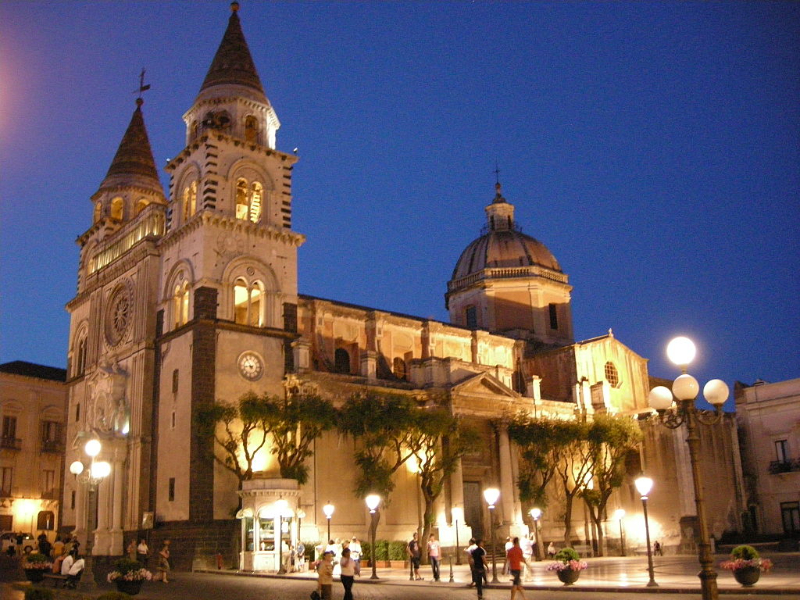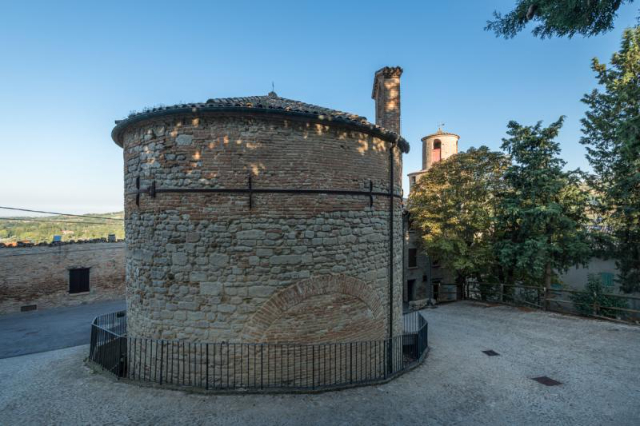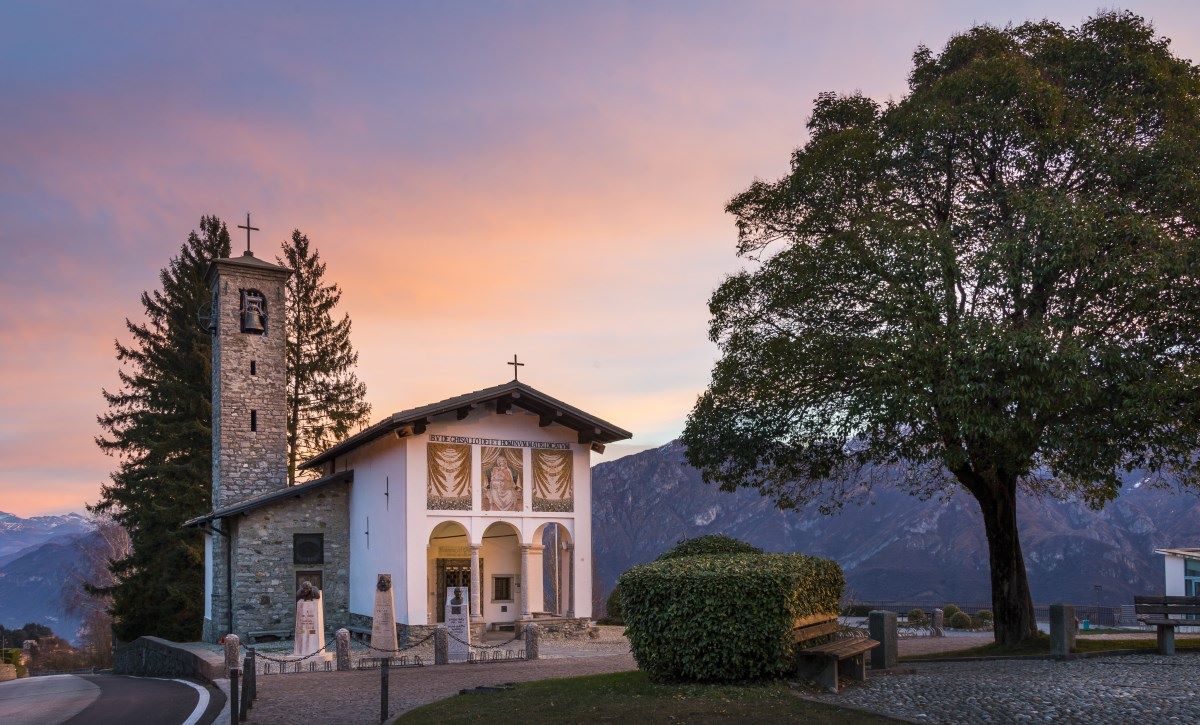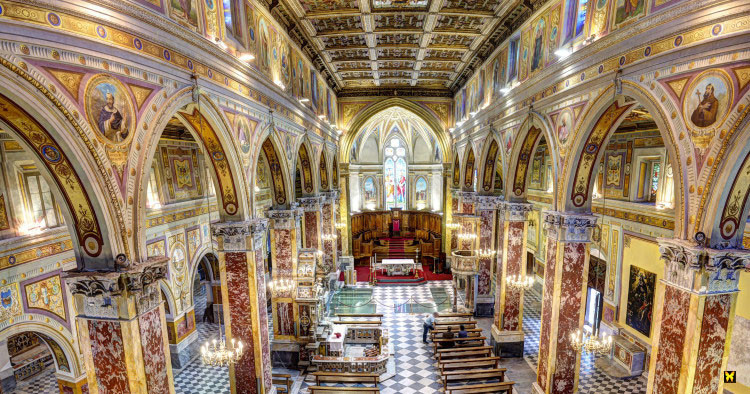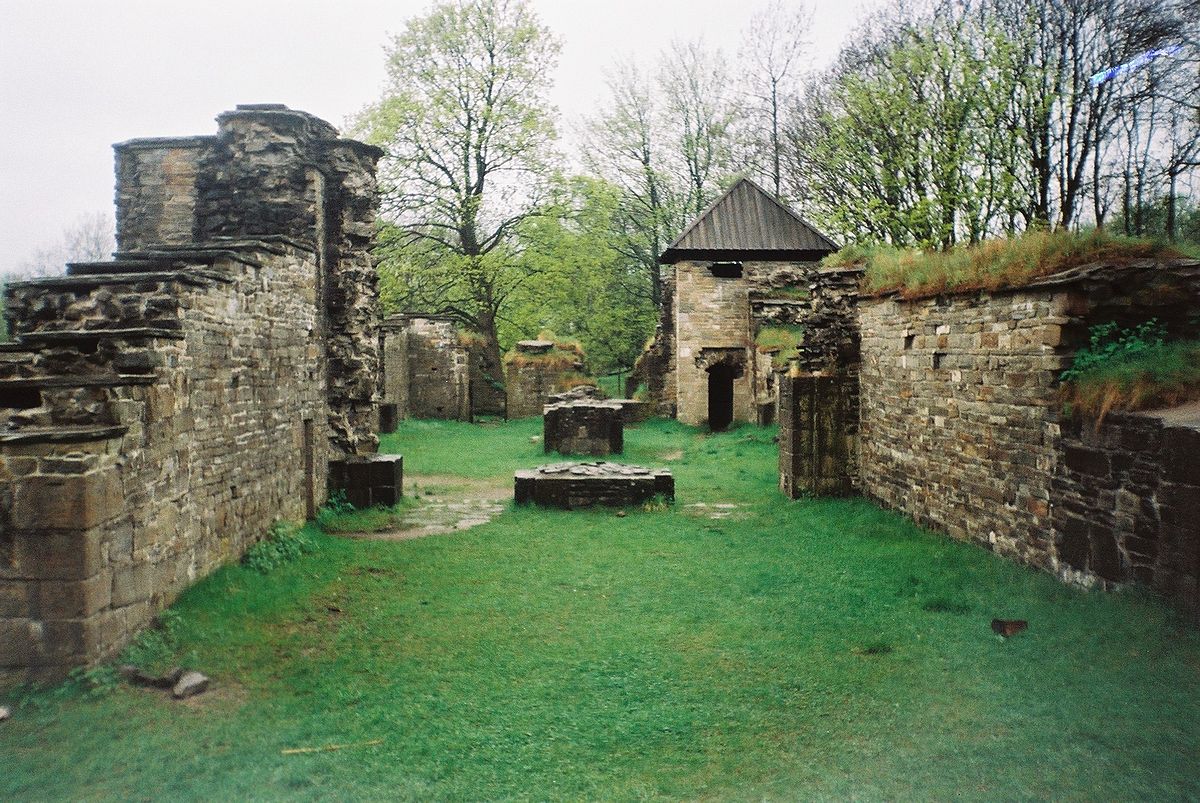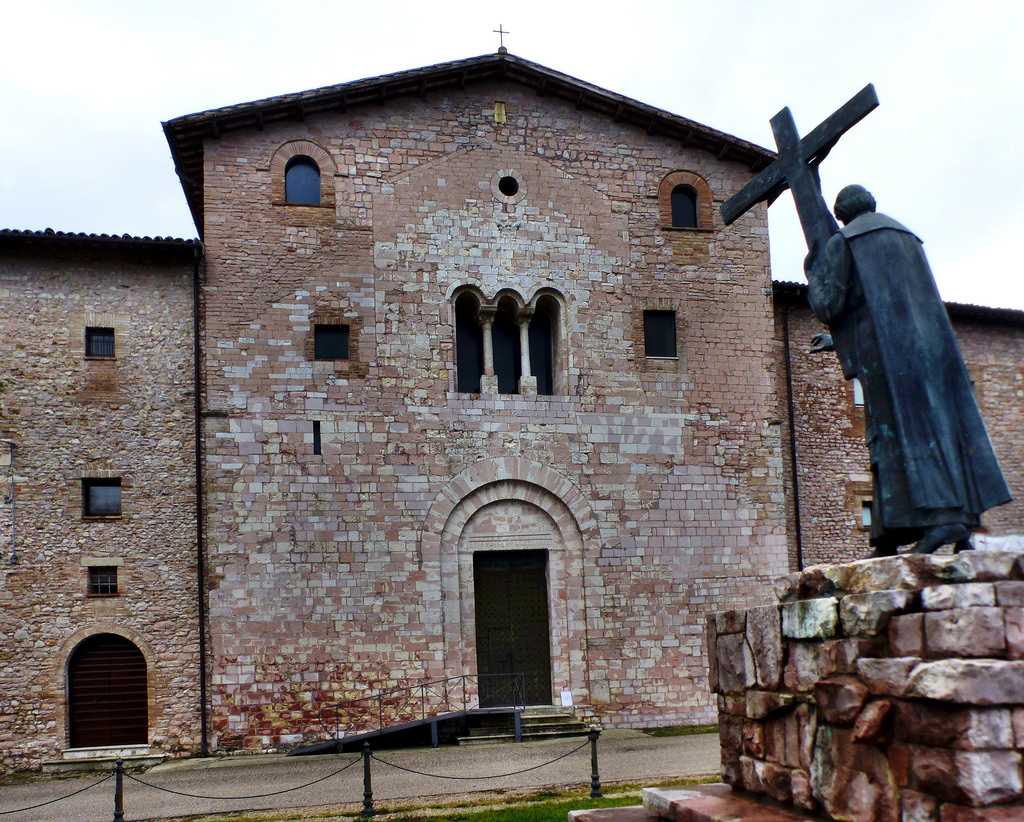The exterior facade, covered in gray stone, has nothing particularly remarkable. But as soon as you enter you immediately understand why it has been called the Sistine Chapel of Milan. Here, in fact, there is an impressive amount of frescoes, as in few other churches in Italy. The imposing fresco decoration, which made the temple famous, was begun in the 16th century by artists from the school of Leonardo da Vinci. The commission was entrusted to the artist most appreciated by the Milanese aristocracy of the time, Bernardino Luini.
The church, built inside the important Monastero Maggiore delle Benedettine, is the work of Gian Giacomo Dolcebuono. It was built in 1503 on the ruins of an ancient church annexed to the monastery, demolished in 1799. The facade is covered with gray stone and contrasts with the interior decoration rich in gold and frescoes.
The interior is divided by a partition into two rooms of equal size: one intended for public church, the other for the nuns’ choir.
A rich pictorial decoration covers the entire articulated architectural structure: it is the most organic testimony of seventy crucial years of painting in Milan, from the 1910s to the end of the century. In the choir there are paintings by Bergognone, while in the chapels there are frescoes by Lomazzo and paintings by Antonio Campi. In the third chapel on the right are the famous paintings by Bernardino Luini, completed by his sons Aurelio and Giovan Piero Luini. To Simone Peterzano is due instead the decoration of the internal facade of the church.


